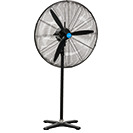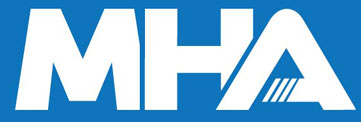Innovations in Lifting Equipment: Trends to Watch
Date Posted:13 January 2025
Whether you’re looking to improve your fleet management with telematics or reduce emissions with electric-powered machines, 2025 promises to be an exciting year for the lifting equipment industry.
Lifting equipment is integral to modern industries, from construction sites and warehouses to factories and logistics centres. As industries continue to evolve, so too does the technology behind lifting equipment, with innovations enhancing both the efficiency and safety of lifting operations. Recently, we’re witnessing a range of advancements that are transforming how lifting equipment is designed, operated, and maintained. From smart technology to sustainable practices, these innovations are shaping the future of lifting equipment.
In this blog, we’ll explore the top trends in lifting equipment innovations to watch in 2024 and 2025.
1. Smart Technology Integration
The rise of the Internet of Things (IoT) and smart technologies is one of the most significant trends impacting lifting equipment. By integrating sensors and software into lifting machines, operators can monitor equipment performance in real time, improve operational efficiency, and enhance safety protocols.
Telematics and Real-Time Monitoring: Telematics refers to the use of wireless technology to collect and transmit data from lifting equipment to a central system. With telematics, operators and fleet managers can remotely monitor equipment, track its location, and assess performance data. This technology allows for real-time insights into:
• Equipment Utilisation: Operators can optimise the use of lifting machines, ensuring they are only used when necessary.
• Preventive Maintenance Alerts: Sensors can detect wear and tear in critical components and notify managers when maintenance is needed. This helps prevent breakdowns and extends the lifespan of equipment.
• Fuel Efficiency and Energy Consumption: For diesel or electric lifting equipment, telematics can provide data on fuel usage or battery life, enabling better energy management.
By using these smart technologies, businesses can reduce downtime, improve safety by monitoring potential issues, and optimise fleet management.
2. Electric and Hybrid Lifting Equipment
As the world focuses more on sustainability, the shift toward electric and hybrid lifting equipment is gaining momentum. Traditional diesel-powered lifting equipment has been known for its carbon emissions and reliance on fossil fuels. In response, manufacturers are introducing electric and hybrid-powered machines that offer a more eco-friendly alternative.
Electric Lifting Equipment: Electric-powered lifting equipment, such as forklifts, scissor lifts, and cranes, is becoming more common in warehouses, factories, and other indoor environments. These machines offer a range of benefits, including:
• Zero Emissions: Electric lifting equipment produces no emissions, making it suitable for use in indoor spaces where air quality is a concern.
• Reduced Noise Pollution: Electric models are quieter than their diesel counterparts, improving the work environment, especially in noise-sensitive areas.
• Lower Operating Costs: Electric lifting equipment is often more cost-effective to operate, with lower fuel and maintenance costs compared to traditional diesel machines.
Hybrid Lifting Equipment: Hybrid lifting equipment, which combines electric and diesel power sources, provides the best of both worlds. These machines can operate on electric power when indoors or in low-emission zones, and switch to diesel when more power is needed or when operating in outdoor areas. Hybrid lifting equipment reduces fuel consumption, lowers emissions, and increases operational flexibility.
In 2024, the push for sustainability in lifting equipment is expected to grow, with more industries adopting electric and hybrid models to reduce their environmental footprint and comply with stricter environmental regulations.
3. Automation and Autonomous Lifting Equipment
Automation is a key trend across many industries, and the lifting equipment sector is no exception. The development of autonomous lifting machines is revolutionising operations by improving efficiency and reducing human intervention in hazardous environments.
Autonomous Forklifts and Cranes: Autonomous lifting equipment is equipped with sensors, cameras, and advanced algorithms that allow the machines to operate without direct human control. These machines can:
• Navigate Around Obstacles: Using technologies such as LiDAR and radar, autonomous lifting machines can safely navigate around obstacles and adjust their paths in real-time.
• Perform Tasks with Precision: Autonomous cranes and forklifts can pick and place materials with high accuracy, reducing the risk of human error.
• Enhance Safety: By removing operators from dangerous or high-risk tasks, autonomous lifting equipment reduces the potential for workplace accidents.
Automation also plays a significant role in optimising logistics and material handling, especially in large warehouses and distribution centres. Autonomous machines can work around the clock without the need for breaks, improving overall productivity and reducing labour costs.
4. Augmented Reality (AR) for Lifting Equipment Training and Maintenance
Augmented reality (AR) is a cutting-edge technology that is making its way into lifting equipment operations. In 2025, AR is being utilised for both training and maintenance purposes, enhancing safety and operational efficiency.
Training with AR: Training operators on complex lifting equipment can be challenging, particularly when teaching them to operate machines in potentially hazardous conditions. AR headsets and mobile apps can provide operators with a virtual environment where they can practice operating lifting equipment without any risk. These systems offer:
• Simulated Scenarios: AR can simulate real-world scenarios, such as lifting heavy loads or navigating tight spaces, allowing operators to practice and develop their skills before using actual equipment.
• Instant Feedback: AR systems can provide operators with real-time feedback on their performance, helping them improve their techniques and avoid mistakes.
Maintenance Assistance with AR: AR can also be used for equipment maintenance, providing technicians with virtual overlays of machine components, guides, and repair procedures. Using AR glasses or mobile devices, technicians can:
• View Component Details: AR can display information such as part numbers, schematics, and maintenance histories directly on the machine.
• Receive Step-by-Step Guidance: Technicians can follow visual instructions for performing repairs or replacements, reducing the likelihood of errors and speeding up the maintenance process.
By using AR, companies can enhance their training programmes, reduce downtime, and ensure lifting equipment is always operating at peak performance.
5. Robust Safety Features and Sensors
Safety is always a top priority when it comes to lifting equipment, and 2024 is set to see further advancements in safety features that protect both operators and workers. Manufacturers are increasingly incorporating sophisticated safety sensors and systems into lifting machines to prevent accidents and ensure safe operation.
Advanced Sensors and Detection Systems: Modern lifting equipment is being equipped with a variety of sensors designed to detect potential hazards and prevent accidents. These include:
• Load Weight Sensors: These sensors can prevent operators from overloading lifting equipment by providing real-time data on the weight of the load being lifted.
• Proximity Sensors: These sensors detect the presence of objects or workers near the equipment, preventing collisions or accidents in busy environments.
• Tilt and Stability Sensors: These sensors monitor the angle of the machine and prevent tipping or unstable lifting. They can automatically adjust the equipment or issue warnings if the tilt reaches a dangerous level.
Improved Emergency Shutdown Systems: Many new lifting machines feature more advanced emergency shutdown systems that can automatically engage if a problem is detected, such as an overloaded system or a mechanical failure. These systems help prevent accidents and damage to the equipment.
As the safety demands in lifting equipment increase, manufacturers are working to incorporate these advanced sensors and safety systems into new models to ensure a safer working environment.
The lifting equipment industry is undergoing rapid transformation, with innovations in smart technology, sustainability, automation, augmented reality, and safety features making lifting operations safer, more efficient, and more eco-friendly. In 2025, we can expect these trends to continue shaping the way businesses use lifting equipment, with a greater focus on automation, remote monitoring, and environmentally sustainable practices.
As companies adopt these innovations, they will not only improve operational efficiency but also enhance safety, reduce environmental impact, and stay ahead of regulatory requirements. Whether you’re looking to improve your fleet management with telematics or reduce emissions with electric-powered machines, 2025 promises to be an exciting year for the lifting equipment industry. By embracing these trends, businesses can future-proof their operations and ensure a safer, more sustainable work environment for their teams.
































































































































 Trolleys & Hand Trucks
Trolleys & Hand Trucks Cage Trolleys
Cage Trolleys Cleaning Carts & Trolleys
Cleaning Carts & Trolleys Construction Trolleys
Construction Trolleys Custom Trolleys
Custom Trolleys Hand Trucks & Dollies
Hand Trucks & Dollies Laundry/Linen Trolleys
Laundry/Linen Trolleys Lifting Trolleys
Lifting Trolleys Order Picking Trolleys
Order Picking Trolleys Panel Cart Trolleys
Panel Cart Trolleys Platform Trolleys
Platform Trolleys Powered Trolleys
Powered Trolleys Shelf & Tiered Trolleys
Shelf & Tiered Trolleys Shopping Trolleys
Shopping Trolleys Stainless Steel Trolleys
Stainless Steel Trolleys Tool Trolleys
Tool Trolleys Utility & Service Carts
Utility & Service Carts Lifting & Handling Equipment
Lifting & Handling Equipment Forklift Attachments
Forklift Attachments Jib Attachments
Jib Attachments Lifting Hoists & Pallet Hooks
Lifting Hoists & Pallet Hooks Load Skates & Tow Tugs
Load Skates & Tow Tugs Manual Stackers & Lifters
Manual Stackers & Lifters Pallet Jacks
Pallet Jacks Pallet Lifters
Pallet Lifters Pallet Rotators & Dispenser
Pallet Rotators & Dispenser Powered Pallet Trucks & Electric Lifters
Powered Pallet Trucks & Electric Lifters Scissor Lift Trolleys and Tables
Scissor Lift Trolleys and Tables Conveyor Equipment
Conveyor Equipment Conveyor Frames & Stands
Conveyor Frames & Stands Roller & Skate Conveyors
Roller & Skate Conveyors Ladders & Access Equipment
Ladders & Access Equipment Container & Yard Ramps
Container & Yard Ramps Ladders & Step Stools
Ladders & Step Stools Work Platforms & Crane Cages
Work Platforms & Crane Cages Drum Handling Equipment
Drum Handling Equipment Drum Storage & Bunding
Drum Storage & Bunding Drum Trolleys & Lifters
Drum Trolleys & Lifters Forklift Drum Handling
Forklift Drum Handling Waste Handling & Bins
Waste Handling & Bins Bin Lifters & Tippers
Bin Lifters & Tippers Plastic Waste & Wheelie Bins
Plastic Waste & Wheelie Bins Steel Waste & Tipping Bins
Steel Waste & Tipping Bins Waste Carts
Waste Carts Dangerous Goods Storage & Spillage
Dangerous Goods Storage & Spillage Aerosol Cans Storage Cages
Aerosol Cans Storage Cages Bunded Pallets & Storage
Bunded Pallets & Storage Corrosive Goods Storage Cabinets
Corrosive Goods Storage Cabinets DG Storage & Trolleys
DG Storage & Trolleys Flammable Liquid Cabinets
Flammable Liquid Cabinets Forklift Gas Storage Cages
Forklift Gas Storage Cages Site Storage
Site Storage Spill Kits
Spill Kits Shelving & Storage Equipment
Shelving & Storage Equipment Stillage & Transport Cages
Stillage & Transport Cages 750 Series Cage Configurations
750 Series Cage Configurations Heavy Duty Cabinets
Heavy Duty Cabinets Heavy Duty Shelving
Heavy Duty Shelving Mega Bins & Pallets
Mega Bins & Pallets Packing & Workbenches
Packing & Workbenches Parts Trays & Stor-Pak Bins
Parts Trays & Stor-Pak Bins Pegboard & Louvre Panels
Pegboard & Louvre Panels Plastic Bins & Crates
Plastic Bins & Crates Plastic Handling Solutions Bins
Plastic Handling Solutions Bins Plastic Pallets
Plastic Pallets Stack & Nest Bins
Stack & Nest Bins Pallet Racking Accessories
Pallet Racking Accessories Workplace Equipment
Workplace Equipment Modular Workbenches
Modular Workbenches Electric Height-Adjustable Workbenches
Electric Height-Adjustable Workbenches Floor Matting
Floor Matting General Workplace Equipment
General Workplace Equipment Industrial Weighing Scales
Industrial Weighing Scales Packaging Machinery
Packaging Machinery Stationery Cupboards
Stationery Cupboards Storage and Stillage Cages
Storage and Stillage Cages Tool Trolleys
Tool Trolleys Tooling Cabinets
Tooling Cabinets Workshop Fans and Coolers
Workshop Fans and Coolers Safety Barriers, PPE & Signage
Safety Barriers, PPE & Signage Barriers & Bollards
Barriers & Bollards First Aid Equipment
First Aid Equipment Gloves, Knives and PPE
Gloves, Knives and PPE Signage
Signage Cleaning & Site Supplies
Cleaning & Site Supplies Cleaning Equipment
Cleaning Equipment Cleaning Trolleys
Cleaning Trolleys Rubbish Bins
Rubbish Bins Signs & Traffic Supplies
Signs & Traffic Supplies Construction Equipment
Construction Equipment Construction Trolleys
Construction Trolleys Waste Handling
Waste Handling General Site Equipment
General Site Equipment Concrete Equipment
Concrete Equipment Site Storage
Site Storage Lifting Equipment
Lifting Equipment Verdex Specials
Verdex Specials









